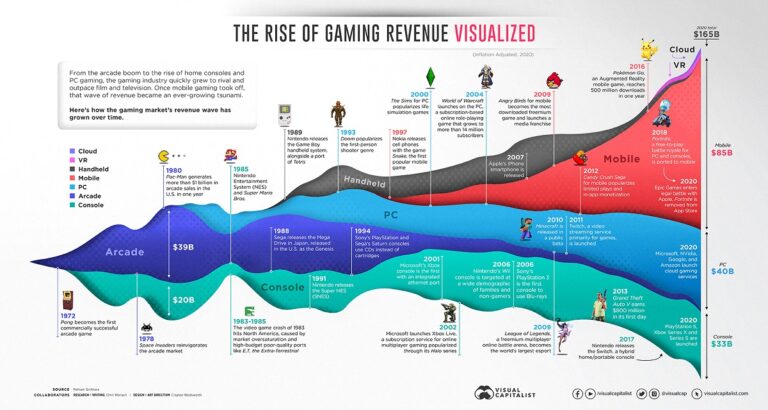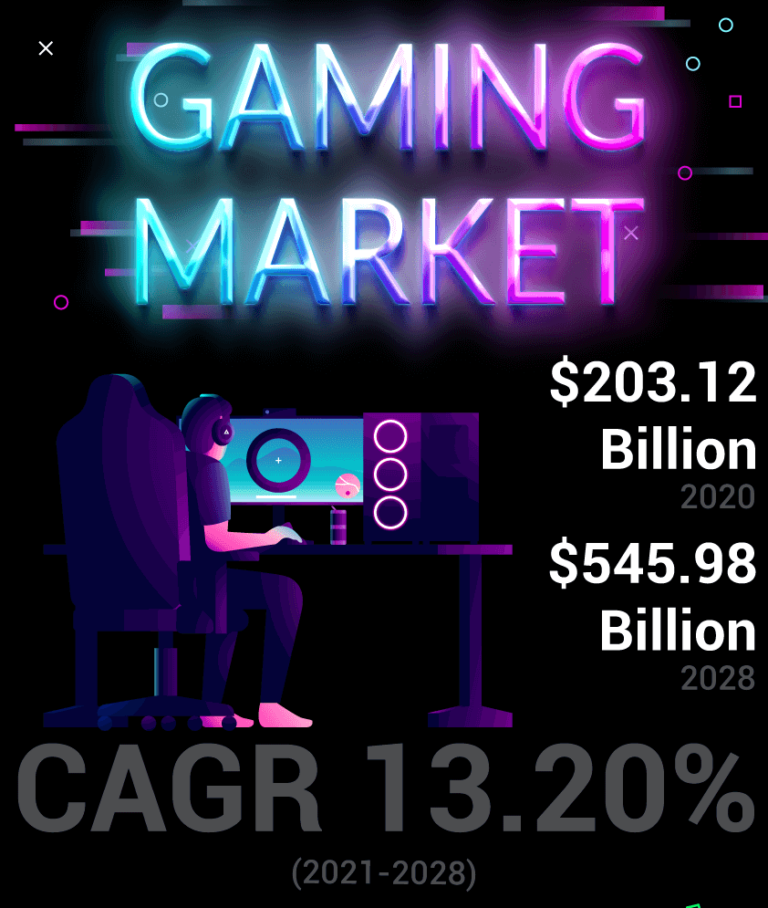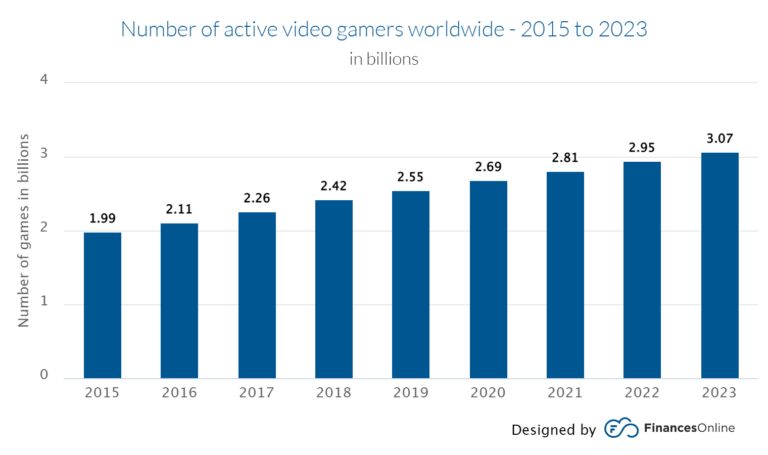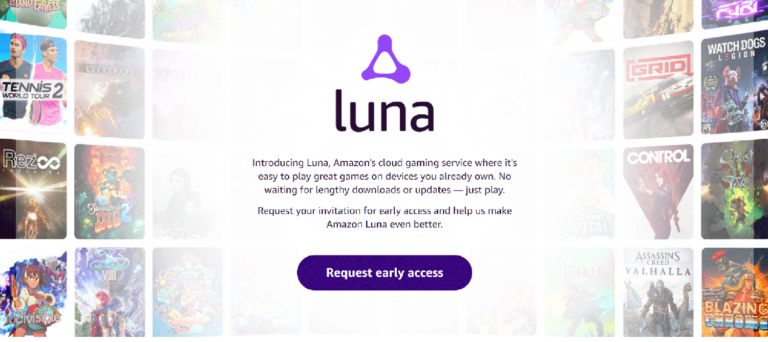The world is changing, and that’s not new. What’s rather new, is that after continued revenue growth at an annual rate of 10.7%, the games industry has seen a slight decline of -1.1% in 2021, expected to generate “only” $175.8 billion this year. And if we look at the development of this industry over time, we will see that every year, the gaming industry has pretty much the same traits – record sales, an unstoppable market, and questions about how much it can grow.

However, it’s worth mentioning that during the pandemic, the inclination toward gaming increased dramatically and it is now the world’s favorite form of entertainment. So, it’s not a surprise that this industry is expected to grow in the next years, projecting to reach $545,98 billion by the end of 2028.

And we’ll see this growth not just in terms of sales and revenue, but also in terms of the number of players. If there were less than 1 billion players around the world in 2015, their number was 2.62 billion by the end of 2020, and it’s forecast to reach 3.07 billion by the end of 2023, according to FinancesOnline and NewZoo.

Some other gaming market data show that:
- according to NewGenApps, by 2025, AR and VR games’ global user base is estimated to increase to 216 million users
- with $93.2 billion and a 7.3% increase YoY, the mobile game revenue in 2021 will amount to 52% of the global market
- esports turnover is expected to reach 1,617.7 million by 2024
- in 2020, some of the favorite game genres included action, strategy, and action-adventure
- cloud gaming is an emerging technology in the games industry that allows the user to stream high-quality games to portable devices with fast network connectivity, such as mobile phones and tablets. This eliminates the need for regular hardware upgrades or a gaming console/PC/laptops
- the release of 5G and unlimited data plans are also expected to be key factors for the success of cloud gaming across the world, as the increasing investment in infrastructure and services is important to this success. According to Newzoo, the number of active smartphones is expected to be 5.3 billion by 2024, while the global share of 5G-ready smartphones is anticipated to grow to 45.4%.
So, it’s important to remember two aspects: first, the gaming industry is here to stay for the next upcoming years. Second, the upcoming innovations that are driven by technological advances and social values will play a huge role and the gamers will easily adapt to them.
In this post, we will take a look at the main trends that will influence the games industry in 2022.
Trend #1: XR will mix the realities
In a nutshell, XR = VR + AR.
XR stands for the extended reality and is an umbrella that covers all the terms related to “another reality”. All the XR technologies, take the PC-human interfaces and modify them either by: 1) immersing you in a virtual environment (VR), 2) augmenting your real-time surroundings by adding different digital elements (AR) or 3) both.
And the development of the technology has a huge contribution here because the XR tech allows the player to create a whole new world from scratch. By overlaying the existing surroundings with distant features and creating new elements at the same time, you can develop games that provide a deeper immersion. And to be more interesting, it enables the player to create characters, targets, and terrains. XR is nothing new, some of the top XR games being Star Wars, Squadrons, Trover Saves the Universe, Half-Life, Alyx, No Man’s Sky, and Pokémon Go. But XR games are certainly one of the fastest-growing trends and will be making headlines in 2022.

Trend #2 in the games industry: Cloud-based gaming
Cloud-based gaming is Gaming as a Service (GaaS) or on-demand gaming. Generally speaking, this is not a new concept, as until now SaaS (Software as a Service) is already well-known to everyone. But for the games industry, the concept is new and will change the way we’ll join our video adventure. Technically speaking, the players don’t need to have hardware at home anymore. Instead, cloud providers will strive to make games more accessible.
Before 2020, the cloud-gaming trend was perceived by the public as a home-based online gaming platform, where the players could play the same game at the same time. Something like watching movies on Netflix or other streaming platforms.
And this trend will become more important in the next years, not just because of the development of the 5G technology and artificial intelligence (AI), but also because the subscription economy is growing 5X faster than the retail one.
Some examples of cloud-gaming services include Steam, Amazon Luna, Sony PlayStation Now, Google Stadia, and Microsoft Project xCloud.

Trend #3 in the games industry: Cross-play platforms
The impact of cross-play gaming platforms goes over into all genres, including online gaming, as it allows players to play against each other from different devices. One can play on an Xbox against another who can play on mobile or PC.
There are many reasons for this growing trend, including the expansion of mobile gaming networks, the growing thirst for quality among mobile gamers, and the development of real-time and cross-platform rendering technologies.
Cross-play games run on the server and can be operated efficiently with the rapid growth of 5G technology. Most of the prominent multiplayer genres support cross-play, allowing players to play regardless of the system they are playing on.
Trend #4: Mobile gaming will keep evolving rapidly

Statistics over the last few years have already shown a rapid growth of the mobile gaming niche. However, forecasts predict that 2022 will see another explosive growth in the number of gamers, reaching almost 3 billion gamers and revenues of +190 billion dollars.
No doubt the coronavirus pandemic and multiple lockdowns have contributed significantly as people are forced to stay at home and look for other ways to spend their free time. So, no wonder they became fans of online adventures.
Trend #5 in the games industry: Crypto gaming
As the name suggests, crypto gaming platforms operate on cryptocurrency networks. This enables players to get virtual products by providing them with a partially distributed ledger architecture. As cryptocurrencies have become a global phenomenon and will continue to grow, industries worldwide are looking for solutions to connect their products and services to them.
Cryptocurrencies have grown in popularity among the playing developers mainly due to a safe and direct way to earn money for the games industry.
Trend #6 in the games industry: More user-generated content (UGC)
The user-generated content is not a new concept. In fact, it was popularized in 2005 by YouTube and since then, it became a permanent trend, regardless of the industry. The UGC has a wide range of benefits, some of the most important being:
- promotion of authenticity especially via social media platforms
- creating trust
- driving purchasing decision.
UGC can mean anything: from reviews to text, videos, and images related to a brand. It opens the doors for creativity and makes people involved and passionate about the project itself. So, it’s no wonder that the idea of involving fans and actual gamers in playing creation has taken the games industry by storm.
In addition, the developers can see what their audience really wants. They can act proactively, analyze the data they receive, and design better products that fit the fans’ needs and desires.
However, it’s worth mentioning here that using UGC involves also some challenges, as the developers must set some limits and pay attention not to be broken. There shouldn’t be any forbidden elements, such as pornography, negative symbolism, and extremism. Secondly, as the majority of user-generated content has a lower quality (being created by nonprofessionals), you’ll need to constantly monitor it.
Trend #7: Social elements
If you take the top-ranked entertainment in the App Stores, you’ll notice that all of them have incorporated social features, such as chars, multiplayer rounds, guilts, etc.
The presence of social elements in games comes with some benefits for both parties:
- for users – it’s the perfect method for solving the social needs, especially during the actual pandemic crisis
- for developers – this is a way to attract and retain players because if you found like-minded people when playing a game, you are more likely to stay longer in that game. As result, you’ll spend more time online, buy a subscription and buy in-game products if you need them to play.
Some of the top mobile games that have social features incorporated Fortnite, Clash of Clans, Minecraft, Call of Duty, Animal Crossing, Pokémon Go, Coin Master, or Homescapes.
Final Words
The world of gaming is constantly evolving as new games are developed, new ways of playing emerge and gamers become more demanding. The trends mentioned in this blog post are just the tip of the iceberg in terms of what’s to come, but these are the changes most players want to know about.
The fun and entertainment elements remain the same, but gamers are becoming more social, and as social media develops, gaming platforms are increasingly being used to play, discuss and engage in gaming culture and etiquette. Whole tribes of gamers are growing online, and this is a niche of the games industry to keep an eye on.






